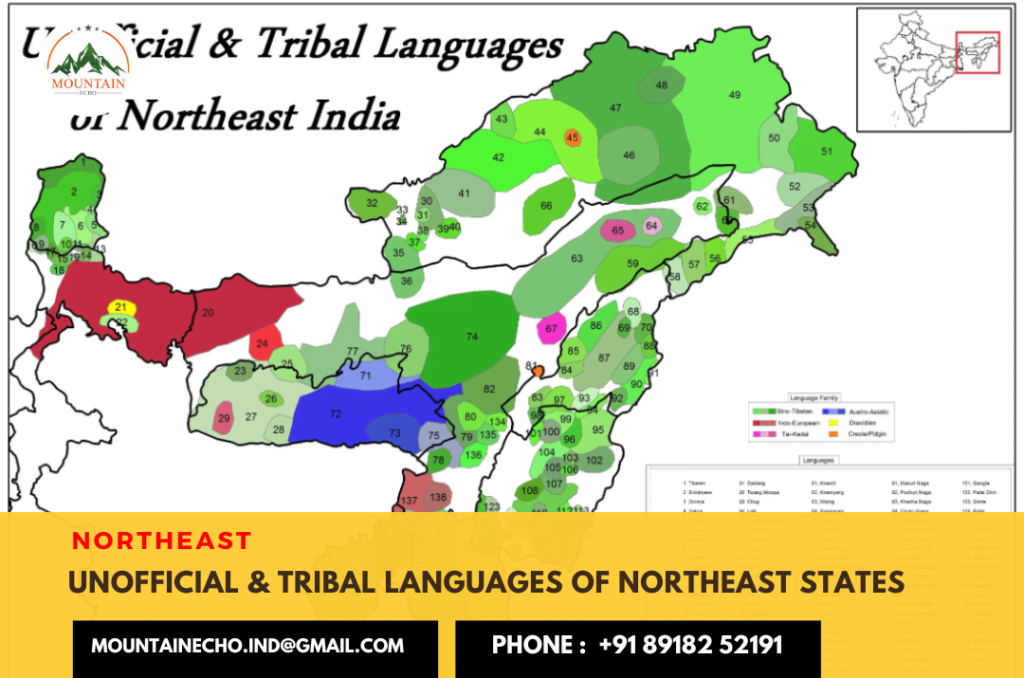Unofficial and tribal languages of Northeast states
The Northeast region of India is one of the most linguistically diverse regions in the world, with over 200 languages spoken. Of these, many are unofficial and tribal languages.
Home to a large number of ethnic groups, each tribe speak their own language, each with their own unique culture and traditions. Many of these languages are endangered, with some having just a few thousand speakers.
The linguistic diversity of northeast India is a testament to the region’s rich cultural heritage and it is important to preserve and promote these languages. The tribal languages of Northeast India hold immense cultural, historical, and social significance.

Tribal languages embody the unique knowledge and cultural heritage of the people who speak them. Mostly preserved in oral traditions, these languages contain traditional stories, songs, poems, and other forms of cultural expression that have been passed down from generation to generation.
The preservation of these tribal languages is essential as Language is deeply rooted with the cultural identity of the people. For the native speakers, speaking their own language is a way to connect with their culture and heritage and a way to assert their identity to the world outside.
As most of the tribes in the Northeast are basically forest dwellers, the tribal people have a deep understanding of the natural world around them. Their traditional knowledge and practices are essential for the conservation of biodiversity and this knowledge is mostly embodied in their languages.
The tribal languages are essential for preserving cultural diversity, maintaining traditional knowledge, empowering indigenous communities, and fostering a sense of identity and pride among tribal members. Efforts to preserve tribal languages often go hand in hand with the revival of other cultural practices, such as traditional art forms, music, dance, and rituals. This cultural revival helps communities reconnect with their roots and fosters a sense of pride and self-worth.
The preservation of these languages contributes to the overall linguistic diversity of the region and the world. Language diversity is crucial for understanding human cognitive capabilities and the evolution of languages.
Preserving tribal languages in Northeast India is essential for cultural continuity, linguistic diversity, community cohesion, and the overall well-being of indigenous peoples. It ensures that their rich cultural heritage and traditional knowledge are not lost and helps empower these communities in a rapidly changing world.



